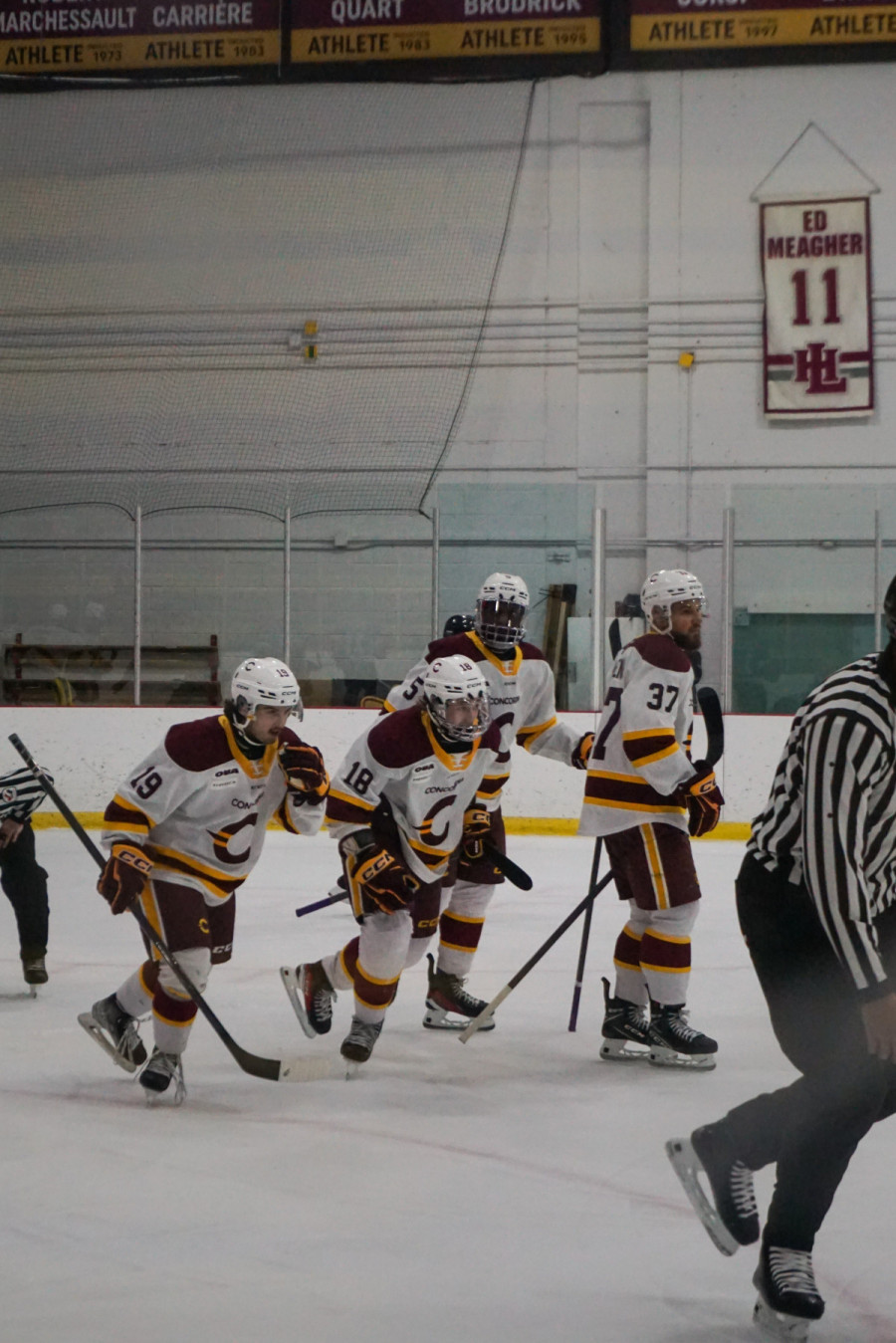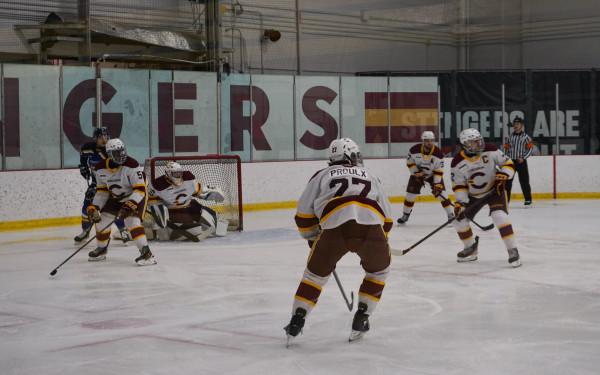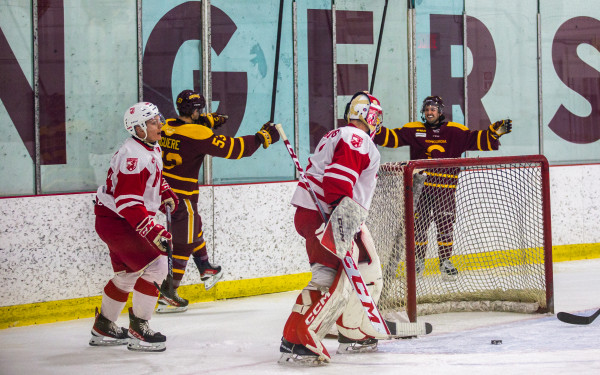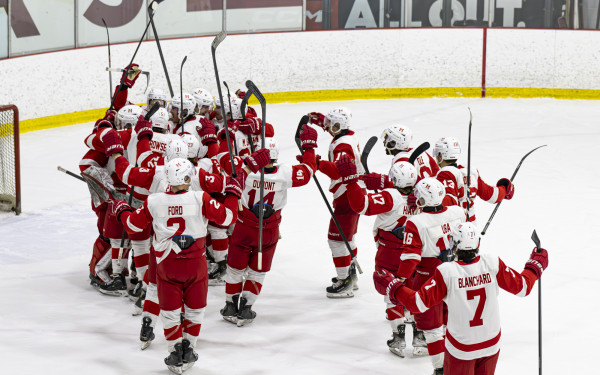The future of hockey protection
One month after Adam Johnson’s death, the hockey community reflects on new safety standards
On Oct. 28, Adam Johnson, an Elite Ice Hockey League player in England, died in what was deemed a “freak accident” in a press release by his team, the Nottingham Panthers. During a game in Sheffield, he received a skate blade to the throat. His death left his team and the hockey world heartbroken.
Concordia’s hockey community is no exception. Stingers men’s hockey team captain Phélix Martineau was terrified when he found out about the accident. “It’s always scary to see another player hurt [...] We all have families and friends. We don’t want to lose our lives during the game,” he said.
Stingers forward Blake Richardson was shocked and devastated when he heard the news, especially due to his connection with the Nottingham team. “My dad played for them [in the past], so it hit close to home,” he said.
During a drill at practice, men’s hockey head coach Marc-André Elément stood in the centre of the ice, shooting pucks towards players and watching intently as teammates collided with each other into the sideboards with thunderous slams. As he spoke about the innate dangers of the game, like flying pucks and sharp blades, it was clear that Element cares about the team’s well-being.
Elément also felt the accident on a personal level; Nottingham defenceman Carl Neill, a former Stinger, was on the ice when the accident occurred. “This is something that shouldn’t happen,” Elément said. He said that he found out about the accident through social media the day after, and contacted the ex-player to offer support. “I don’t want to go through this,” Elément said, adding that sometimes he feels his players are not protected enough.
Women’s hockey head coach Julie Chu also spoke to the physical nature of the sport. “It’s a fast-paced sport that’s high contact. We have chances to make body contact that might lead to injury, then sometimes we make the same body contact and nothing happens,” said Chu, adding that despite injuries being a reality in hockey, “it doesn’t mean we don’t have to be safe.”
Chu has spoken with her team in the past about on-ice safety, focusing on teaching players to pay attention to their surroundings and their own bodies. “Hopefully we can create skills that allow us to play the physical—but safe—way,” she said.
Outside of coaching techniques, much of a player’s level of safety is left in their own hands. For instance, Martineau wears a full fishbowl face covering, but only after he sustained an injury. “I got a hockey stick to the eye and I couldn’t see [...] I thought I was gonna lose my eye,” he said. Although he regained his vision after a few hours, he said it was a frightening experience.
Johnson's death has sparked change within the hockey community, Stingers included.
Richardson recalled that he used to wear a neck guard when he was young, but stopped as he got older. He noted that since Johnson’s death, the team has been especially proactive regarding safety. “Someone even came in and asked what kind of neck guards we wanted,” he said.
Both Martineau and Elément indicated that the team may be wearing neck guards consistently going forward.
Hockey Canada already had mandatory neck guards for minor leagues and women’s leagues, as laid out in their equipment regulations. Two major junior hockey leagues, the Ontario Hockey League and the Quebec Major Junior Hockey League already made them mandatory. However, several other leagues, especially in England, have seen changes in regulations following Johnson’s death.
The English Ice Hockey Association announced in a press release that neck guards will be mandatory after Dec. 31, leaving a delay to accommodate “anticipated supply issues.” Until then, players are strongly recommended to wear them.
The British Universities Ice Hockey association also announced on Facebook on Nov. 4 that both mouth and neck guards would be mandatory as of Dec. 1.
Leagues in Canada where neck guards were not already mandatory are now moving in the same direction. The Western Hockey League, a major junior league, announced on social media that neck guards would be mandatory as of Nov. 3.
TSN hockey insider Darren Dreger also reported on social media that Ontario University Athletics, the league in which the Stingers men’s hockey team plays, will be mandating neck guards, but did not specify when the change would go into effect.
Elément mentioned that he thinks the NHL could be implementing neck guards in the future. Canadiens forwards Brendan Gallagher and Michael Pezzetta were recently seen wearing neck guards at practice, as well as Josh Norris and Claude Giroux from the Ottawa Senators. Elément said that, if the NHL changed their regulations, other leagues would follow suit.
Chu, however, was less confident that the NHL would change their rules. “I’m not sure if it would ever be mandated,” she said. She pointed out that the NHL predates neck guards by several decades, and that new safety equipment takes a while to be generally accepted.
“With that said,” Chu added, “There were probably people in the past that would not have expected helmets to be mandated.” She noted that, with or without regulation changes, neck guards are now a part of the continuous dialogue about safety in hockey.
While the hockey community remains shaken by Johnson's death, Chu noted that confidence in the game needs to remain solid and that players must think about the game on the ice.
“For our team, we don’t step on the ice and think, ‘Oh, we’re going to get injured,’ because if we do, I think we actually put ourselves at a greater risk of injury,” said Chu, adding that fear and hesitancy can disrupt the game’s natural flow. “We’re thinking it’s going to be a great game, and [about] the things we love about hockey.”
This article originally appeared in Volume 44, Issue 7, published November 28, 2023.


_600_832_s.png)




_600_375_90_s_c1.jpg)